KORENKO
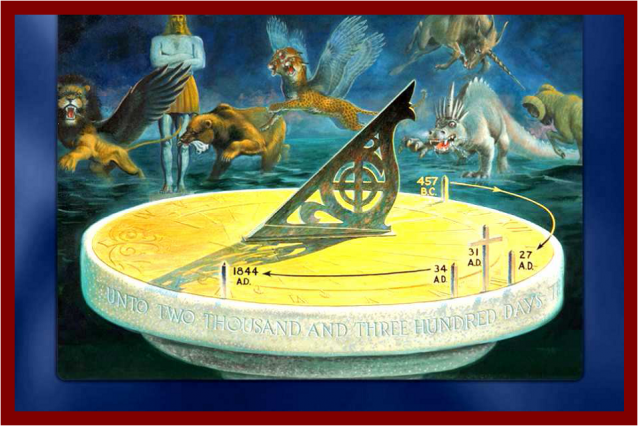
Introduction
The war between God and Satan moves to a whole new level from this point on because we will be dealing heavily with prophecies as found in Daniel and Revelation. In Lesson One, we covered some fairly straight forward prophecies. These prophecies were explained to some degree by the Bible and the symbolism was easily seen and compared. The symbols in Daniel 2, 7 and 8 had enough similarities that they were easily interpreted
In the first lesson, we looked at the time prophecies at a very high level. There were four major world kingdoms, followed by another power that came out of the fourth kingdom, and the last was a mixture of powers that did not hold together or become a major world kingdom.
Before we get into more of the details in Daniel’s visions and then later in the Apostle John’s visions in Revelation, let’s take a look at some of the issues that we see in dealing with prophecy.
An Important Note
As we deal with prophecy, we will be dealing with some sensitive issues regarding the papacy and the Roman Catholic Church. Prophecy is talking about the PAPAL SYSTEM and NOT the individual members in the Roman Catholic Church. Prophecy focuses on the TEACHINGS AND ACTIONS of the papacy. IN ALL CHURCHES, including the Catholic Church, God has His people who love Him and who are living up to all the light they have been given, even though that light does not encompass the entire truth. After all, which of us has the whole truth? As Paul says, in 1 Corinthians 13:12 “For now we see through a glass, darkly; but then face to face….”.
Each of us is responsible to live up to all the truth that God has given us.—Its not what we know that will save us, it is what we do with what we know! It is our response to His love.
Rev 2:24 In the midst of spiritual darkness, God holds His people to a lower standard
Rom 2:13-15 God puts His laws into our hearts—what is our response?
Mat. 7:15-23 Motive is important—These looked for the power and not the Spirit
Mat 25:34-46 Our service to fellow man—Christ is our example
Before We Start
Dear Jesus. We thank you for giving us wisdom and knowledge when we ask for it. We need it now as we continue to study about prophecies and how Satan is trying to confuse the issue. Help us to know that is your truth for us. Amen
Pre-Lesson Reading Assignment
Before we go any further, please read the following texts.
Daniel 7:8, 19-27; 8:9-14, 24-25; 11:31-39; 12:11-13
Revelation 12:1-6, 13-17; 13:1-9; 17:3-18
Note the similarities in these texts. It is because of these texts that we have a division of prophetic interpretation.
Three Ways To Interpret Prophecy
There are three ways to interpret prophecy; Historicism, Futurism and Preterism. In this lesson we will explore all three of these methods, how they developed, who started them, why they were started and how it affects what we believe. This is one of Satan’s major battles for the mind. The more he can confuse people, the more people he can keep out of God’s Kingdom.
Historicism
Prophetic commentaries in the early church were often partial or incomplete, usually interpreting individual passages rather than entire books. The earliest complete commentary on the book of Revelation was carried out by Victorinus in 300 AD. Nevertheless, an overview of the various prophetic expositions from the 1st to the 5th centuries demonstrates that prophecies were uniformly interpreted on a Historicist basis. Though looking to the future fulfillment of certain prophetic passages, the overwhelming number of Early Church Fathers understood the events of Biblical prophecy (especially as contained in the books of Daniel and Revelation), as encompassing the duration from the ascension of Christ to his second advent. Historicists look at the prophecy timeline given by God and interpret prophecy in a straight forward manner. One event follows another in a historical pattern. They look at the entire picture from the beginning to the end and recognize that each event has its own place and that one event leads to another. Past Historicists - Albert Barnes, John Calvin, Adam Clarke, Jonathan Edwards, Edward Bishop Elliott, John Gill, Matthew Henry, Alexander Hislop, John Knox, Martin Luther, Isaac Newton, Ian Paisley, John Wesley, Ellen G. White, George White)ield, Charles H. Spurgeon
Why Are There Other Methods?
Up to the 1500’s, almost all Bible interpreters were historicists. In looking at the four major world kingdoms, Babylon, Medo-Persia, Greece and Rome, there was solid agreement on the interpretations. It is what came next that caused problems. You read the texts at the beginning of the lesson. This was the area of contention.
Futurism and Preterism
In the 1500’s, the major prophecy interpreters began to come up with one answer to the Little Horn prophecy.; The Papacy. The signs pointing to the papacy were so strong and the elements )it so neatly that it was impossible to come up with any other power that )it the prophecy so well. The only problem was that the papacy was a religio-political power that dominated Europe and it sure didn’t want to be known as the Little Horn Power. So to counter-act the growing belief in the papacy as the Little Horn power, a Jesuit doctor of theology, born in Spain came up with an alternate interpretation putting the Little Horn power in the future, and creating the Futurist view of prophecy. If everything happens in the future, then it can’t be the papacy. Francisco Ribera (1537–1591) proposed that the first few chapters of the Apocalypse applied to ancient pagan Rome, and the rest he limited to a yet future period of 3½ literal years, immediately prior to the second coming. In order to do this, he proposed a 2000 year gap in the prophecy. In this effort, he was strongly supported by the great Catholic controversialist Robert Cardinal Bellarmine. To make it official, the Futuristic system of interpretation was instigated by the Council of Trent (1545–1563) as a response to the Protestant reformation (Standard Roman Catholic Interpretation).
In addition, another Jesuit priest by the name of Luis de Alcazar (wrote somewhere between 1545 and 1648), espoused a Preterist (past) view, maintaining that practically all prophecy ended with the downfall of the Jewish church and nation and the forcible overthrow of pagan Rome, and that Antichrist was some pagan Roman emperor like Nero, Domitian, or Diocletian.
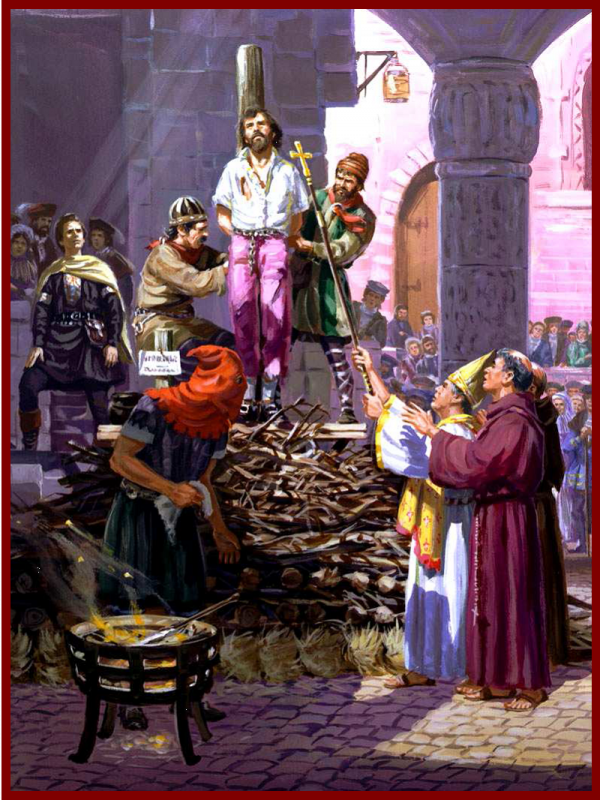
So now we have, the papacy providing two conflicting, and mutually exclusive, explanations springing from the same Roman Church. But they accomplished their purpose of confusing Protestant prophetic interpretation. Preterism has been described in modern eschatological commentary as a Catholic defense against the Protestant Historicist view which identified the Roman Catholic Church as a persecuting apostasy.
This shows how desperate the papacy was to deflect any criticism away from itself during the Middle Ages. Most people know the history of the Dark Ages with the Inquisition, the burning of martyrs and the persecution that the papacy used against its detractors at the time. It certainly fit the description of the Little Horn Power. Note that Daniel 7:25 says that this power will “think to change times and laws“. The papacy through Ribera and de Alcazar were definitely trying to change prophetic times.
What About Today?
If you read many modern commentaries, you will see that they follow either the Futurist or the Preterist view or a combination of the two. So how did that happen. The papacy developed these views to counteract the protestant views, but why do many protestant commentators use these views?
In the 1600’s, Hugo Grotius, (1583-1645) a Dutch Protestant became eager to establish common ground between Protestants and the Roman Catholic Church. He wrote “Commentary on Certain Texts Which Deal with Antichrist” (1640), in which he attempted to argue that the texts relating to Antichrist had their fulfillment in the 1st century AD. In “Commentaries On The New Testament” (1641-1650), he expanded his Preterist views to include the Olivet prophecy and Revelation. His interpretation of Revelation was overwhelmingly rejected by Protestants and gained no ground for at least 100 years.
Then other protestant writers got on the bandwagon. Thomas Hayne (English Commentator) claimed that the prophecies of the Book of Daniel had all been fulfilled by the 1st century (‘Christ’s Kingdom on Earth’, 1645), and Joseph Hall expressed the same conclusion concerning Daniel’s prophecies (‘The Revelation Unrevealed’, 1650), but neither of them applied their Preterist views to Revelation.
Henry Hammond (Englishman 1605-1660) sympathized with Grotius’ desire for unity among Christians, and found his Preterist exposition useful to this end. Hammond wrote his own Preterist exposition in 1653, borrowing extensively from Grotius.
Arian, Firmin Abauzit (Swiss Protestant) wrote the )irst Full Preterist exposition (1730) by the (‘Essai sur l'Apocalypse’). Later, though, it appears that Abauzit recanted this approach after a critical examination by his English translator, Dr. Twells.
Robert Townley The earliest American Full Preterist work was 'The Second Advent of the Lord Jesus Christ: A Past Event', which was written in 1845. Townley later recanted this view.
So over time, these views became more acceptable to the protestant commentators such that many protestants now accept the Roman Catholic interpretations of prophecy, Futurism, Preterism and/or a mix of the two.
Other Confusing Issues
In addition to these two views, another issue was created by Porphyry (A.D., 233–c. 304), a Neoplatonist and a defender of paganism. He was alarmed at the spread of Christianity and contended that Daniel was written in the 2nd century not the 6th. (since disproven). In order to confuse the interpreters in his time, he came up with the Antiochus IV interpretation, also that the 4th kingdom is Greece instead of Rome.
This view was discarded by Protestantism until brought out of its obscurity by Hugh Broughton (1549–1612) of England. As a result, the Antiochus Epiphanes IV interpretation is accepted in most modern commentaries not following the historicist view of prophecy even though it has been proven that Antiochus IV did not even remotely meet the conditions of the prophecy. It is part of the Preterist interpretation of prophecy.
How the Three Different Views Interpret Dan 9:8-14
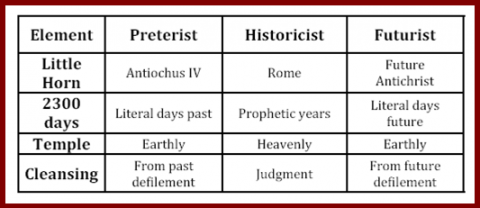
How the Three Different Views Interpret the Various
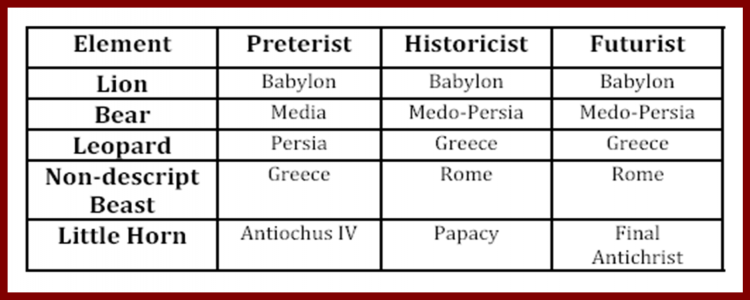
Beast Kingdoms
If you follow either the Preterist interpretation or the Futurist interpretation of Revelation, it is almost impossible to make any sense out of
Revelation as a whole. You may be able to explain portions of the book but you cannot tie the entire book together and have it agree with itself, the old Testament, the book of Daniel in particular, and the New Testament. God’s times and laws are not for man to play with. (See Daniel 7:25)
Some Basic Principles In Interpreting Prophecy
We already saw a couple of these basic principles in Lesson One. Here are some basic principles when trying to interpret prophecy.
1. Prophecy starts in the present day of the prophet when the prophet is alive
2. Additional prophecies expand the )irst prophecy and give more detail

3. Prophetic times are almost always based on the day-year principle (Ezekiel 4:5-6). Each prophetic day equals a year. There are also prophecies where literal time periods are used (French Revolution in Revelation). They can be tested by applying the day-year principle first and if that doesn’t fit, use literal time instead.
4. Prophecy can be literal or symbolic. Try the literal interpretation first, if that doesn’t work, apply a symbolic interpretation. Some of the prophecies use literal interpretation principles for part of the prophecy and symbolism for the rest. (Seven last plagues in Revelation)
5. Look for parallel events in the Bible. Sometimes a literal event helps us to identify what the symbolism means.
Does Historicism Make Sense Politically?
Let’s look at the Little Horn Power and Historicism and see if it makes any sense to you. At this time we will only look at the political aspects of the Little Horn. We will look at the spiritual side of it in the next lesson.
Reading Daniel 7:7-8 & 19-20, we look at the terrible beast with ten horns that represents Rome. In the middle of the ten horns comes up another horn that replaces three of the horns. If we read further in Daniel 7:23-26,Daniel tells us that the fourth beast is the fourth kingdom, Rome, and out of Rome will come ten kings. But after these ten kings, a king different from them will come to power and will overpower three of the ten kings. This new king will be in power for 1,260 (prophetic) days (1,260 years) after which the power will be taken away until the end of the world. (The texts in Daniel 8, 11 and 12 are part of the spiritual interpretation so we will skip them at this time.
The History of Rome and The Ten Kingdoms
As Rome declined in power, ten tribes arose out of various parts of the Roman Empire. The tribes were: The Alamanni, The Burgundians, The Franks, The Lombards, The Saxons, The Suevi, The Visigoths, The Heruli, The Vandals, and the Ostrogoths. As you can see in the accompanying graphic, each of these tribes became a European people.
One of the pagan tribes, The Franks , had a king by the name of Clovis I. Apparently he had married a catholic wife and told her that if she prayed for his victory in battle, and he won, he would be converted. It happened and in A.D 530, Clovis became “Protector of the Faith”. Although he died in A.D. 511 (or 513?) he opened the door for the papacy to gain power. At the time, three of the tribes, the Heruli, the Vandals and the Ostrogoths were supporters of Arianism which was opposed to the papacy. In A.D. 533 the Emperor Justinian recognized the papacy as being the spiritual head of all the churches. This gave the papacy an opening to extend its power over all the rulers but it wasn’t until A.D 538 when the last of these three tribes were defeated that the papacy was in full control of all the government.
It is interesting to note that the French brought the papacy to power (Clovis I) and it was the French that took that power away 1,260 years later. In 1798, General Berthier, a commander under Napoleon, marched into Italy, invaded the Vatican and took Pope Pius Vi prisoner. This dealt the deadly wound to the papacy that was prophesied. Although the wound has been healed, the papacy never returned to its former power structure.
So we can see that politically, the papacy does )it the prophecy in Daniel 7. When the futurists and preterists interpret the prophecies their way, they seem to ignore the political aspects of the papacy as seen in Daniel 7. They separate the visions of Daniel 7 and 8 and interpret each vision differently.
The Preterists ignore Rome in the Daniel 8 prophecy and put Antiochus IV Epiphanes in its place. He could not possibly fit into this prophecy because he was born c. 215 BC; and died 164 BC. His reign was from 175 BC until his death in 164 BC which does not meet the 1260 day time frame, literal or prophetic. They also have to change the interpretation of the beasts in Daniel 8.
The Futurists on the other hand accept Rome in Daniel 8 and then skip about 2000 years into the future before the Antichrist is to come. Where do they get the 2000 year gap?
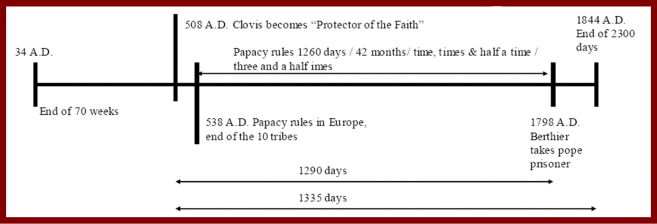
Review
1. Historicism was used to interpret prophecy until the 1500’s
2. Because of the Historicist view of the Little Horn as the papacy, the papacy developed two other ways to interpret prophecy to de)lect the attention away from the papacy. These were Futurism and Preterism
3. These methods of interpretation were ignored by the early protestants but individuals trying to reunite the papacy and protestants encouraged the use of these methods at a later date
4. Most modern Bible commentaries use either the Preterist or the Futurist method of interpretation instead of the Historicist method.
5. Using the Historicist method, the papacy fits the criteria in Daniel 7 from a political point of view.
6. Antiochus IV Epiphanes does not meet the criteria of Daniel 7
How Does This Show God’s Love?
He has given us enough detail in these prophecies so that we will not be deceived. In addition, He has given us the same material in more than one vision and in different ways so that if we miss the details in one vision, we may understand them in another. He really wants us to know.
Jesus wants us to be prepared for His coming. That’s why He has given us all this very detailed information. If you truly want to know the truth, and read His Word with a prayer in your heart and an open mind, He WILL guide you into His truth.
Psalms 25:9 The meek will he guide in judgment: and the meek will he teach his way.
Psalms 32:8 I will instruct thee and teach thee in the way which thou shalt go: I will guide thee with mine eye.
James 1:5 If any of you lack wisdom, let him ask of God, that giveth to all men liberally, and upbraideth not; and it shall be given him.
Other Reading
Wikipedia has a wealth of information for this lesson. Try looking up any one of the ten tribes, Clovis I, Historicism, Preterism, Futurism, any one of the names used in this lesson.
A great website on prophecy: www.amazingfacts.org
Symbols of Bible Prophecy
Why use symbols in Bible Prophecy?
Luke 8 :10 And He said, "To you it has been given to know the mysteries of the kingdom of God, but to the rest it is given in parables, that 'Seeing they may not see, And hearing they may not understand.' Many of the apocalyptic prophecies were given while the prophets were in a hostile foreign land. One reason God cloaked the prophecies in symbols was to protect the messages.
Animals and their Parts
· Horse = Strength and power in battle
(Job 39:19; Psalm 147:10; Proverbs 21:31)
· Dragon = Satan or his agency
(Isa. 27:1; 30:6; Psa. 74:13, 14; Rev. 12:7-9; Eze. 29:3; Jer. 51:34)
· Beast = Kingdom / Government / Political Power
(Daniel 7:17, 23)
· Lamb = Jesus / Sacrifice
(John 1:29; I Cor. 5:7)
· Lion = Jesus / Powerful king i.e. Babylon
(Rev. 5:4-9; Jer. 50:43, 4; Daniel 7:4, 17,23)
· Bear = Destructive power / Medo-Persia
(Proverbs 28:15; 2 Kings 2:23, 24; Daniel 7:5)
· Leopard = Greece
(Daniel 7:6)
· Serpent = Satan
(Revelation 12:9; 20:2)
· Tongue = Language / Speech
(Exodus 4:10)
· Wolf = Disguised enemies that hunt in a time of darkness
(Matthew 7:15)
· Dove = Holy Spirit
(Mark 1:10)
· Ram = Medo-Persia
(Daniel 8:20)
· Goat = Greece
(Daniel 8:21)
· Hom = King or kingdom
(Daniel 7:24; 8:5, 21,22; Zechariah 1:18, 19; Revelation 17:12)
· Wings = Speed / Protection / Deliverance
(Deuteronomy 28:49; Matthew 23:37)
Colors
· White = Purity
(Revelation 12:9; 20:2)
· Blue = Law
(Numbers 15:38,39)
· Purple = Royalty
(Mark 15:17; Judges 8:26)
· Red, Scarlet = Sin / Corruption
(Isaiah 1:18; Nahum 2:3; Revelation 17:1-4)
Metals, Elements, and Natural Objects
· Gold = Pure character, Precious, Rare
(Isa. 13:12)
· Silver = Pure words and understanding
(Proverbs 2:4; 3:13, 14; 10:20; 25:11; Psalm 12:6)
· Brass, Tin, Iron, Lead, Silver Dross = Impure Character
(Ezekiel 22:20, 21)
· Water = Holy Spirit / Everlasting Life
(John 7:39; 4:14; Revelation 22:17; Ephesians 5:26)
· Waters = Inhabited area / People, Nations
(Rev. 17:15)
· Fire = Holy Spirit
(Luke 3:16)
· Tree = Cross / People / Nation
(Deuteronomy 21:22-23; Psalm 92:12; 37:35)
· Seed = Descendents / Jesus
(Rom. 9:8; Gal. 3:16)
· Fruit = Works / Actions
(Galatians 5:22)
· Fig Tree = A nation that should bear fruit
(Luke 13:6-9)
· Vineyard = A Church that should bear fruit
(Luke 20:9-16)
· Field = World
(Matthew 13:38; John 4:35)
· Harvest = End of the world
(Matthew 13:39)
· Reapers = Angels
(Matthew 13:39)
· Thoms / Thorny Ground = Cares of This Life
(Mark 4:18, 19)
· Stars = Angels / Messengers
(Rev. 1:16,20; 12:4; 7-9; Job 38:7)
· Jordan = Death
(Romans 6:4; Deuteronomy 4:22)
· Mountains = Political or religio-political powers
(Isaiah 2:2, 3; Jer. 17:3; 31 :23; 51 :24,25; Eze. 17:22,23; Daniel 2:35, 44, 45)
· Rock = Jesus/Truth
(l Corinthians 10:4; Isaiah 8:13, 14; Romans 9:33; Matthew 7:24)
· Sun = Jesus / The gospel
(Psalm 84:11; Malachi 4:2; Matthew 17:2; John 8:12; 9:5)
· Winds = Strife / Commotion / "Winds of war"
(Jeremiah 25:31- 33; 49:36, 37; 4:11-13; Zechariah 7:14)
Miscellaneous Objects
· Lamp = Word of God
(Psalm 119:105)
· Oil = Holy Spirit
(Zechariah 4:2-6; Revelation 4:5)
· Sword = Word of God
(Ephesians 6:17; Hebrews 4:12)
· Bread = Word of God
(John 6:35,51,52,63)
· Wine = Blood / Covenant / Doctrines
(Luke 5:37)
· Honey = A happy life
(Ezekiel 20:6, Deut. 8:8, 9)
· Clothing = Character
(Isaiah 64:6; Isaiah 59:6)
· Crown = A glorious ruler or rulership
(Proverbs 16:31; Isaiah 28:5; 62:3)
· Ring = Authority
(Genesis 41 :42,43; Esther 3:10-11)
· Angel = Messenger
(Daniel 8:16; 9:21; Luke 1:19,26; Hebrews 1:14)
· Babylon = Apostasy / Confusion / Rebellion
(Genesis 10:8-10; 11 :6-9; Revelation 18:2,3; 17:1-5)
· Mark = Sign or seal of approval or disapproval
(Ezekiel 9:4; Romans 4:11; Revelation 13:17; 14:9-11; 7:2, 3)
· Seal = Sign or mark of approval or disapproval
(Romans 4:11; Revelation 7:2, 3
· White Robes = Victory / Righteousness
(Revelation 19:8; 3:5; 7:14)
· Jar, Vessel = Person (Jer. 18:1-4; 2 Cor. 4:7)
· Time = 360 Days
(Daniel 4:16,23,25,32; 7:25; Daniel 11:13 margin)
· Times = 720 Days
(Daniel 7:25; Revelation 12:6, 14; 13:5)
· Day = Literal year
(Eze. 4:6; Num. 14:34)
· Trumpet = Loud warning of God's approach
(Exodus 19:16, 17, Joshua 6:4, 5)
Actions, Activities, and Physical States
· Healing = Salvation
(Luke 5:23, 24)
· Leprosy, Sickness = Sin
(Luke 5:23, 24)
· Famine = Dearth of Truth
(Amos 8:11)
People and Body Parts
· Woman, Pure = True church
(Jeremiah 6:2; 2 Corinthians 11 :2; Ephesians 5:23-27)
· Woman, Corrupt = Apostate church
(Eze. 6:15-58; 23:2-21; Hosea 2:5; 3:1; Revelation 14:4)
· Thief = Suddenness of Jesus' coming
(I Thessalonians 5:2-4; 1 Peter 3:10)
· Hand = Deeds / Works / Actions
(Ecclesiastes 9:10; Isaiah 59:6)
· Forehead = Mind
(Deuteronomy 6:6-8; Romans 7:25; Ezekiel 3:8, 9)
· Feet = Your walk / Direction
(Genesis 19:2; Psalm 119:105)
· Eyes = Spiritual discernment
(Matthew 13:10-17; 1 John 2:11)
· Skin = Christ's righteousness
(Exodus 12:5; 1 Peter 1:19; Isaiah 1 :4-6)
· Harlot = Apostate church or religion
(Isaiah 1:21-27; Jeremiah 3:1-3; 6-9)
· Heads = Major powers / Rulers / Governments
(Revelation 17:3, 9, 10)
Numbers in Bible Prophecy
Many of the numbers in the Bible have deeper prophetic or spiritual significance. Both in the Old and New Testaments, numbers reveal hidden concepts and meanings that commonly escape the casual reader. And throughout history, men with great minds, like Augustine, Isaac Newton, and Leonardo Da Vinci, showed more than just a passing curiosity regarding the importance of biblical numbers. Once more, Jesus said, "The very hairs of your head are numbered" (Matthew 10:30). So obviously, Bible numbers should be carefully considered.
At least 12 numbers in the Bible stand out in this regard:1, 2, 3, 4, 5, 6, 7, 10, 12, 40, 50, and 70. In order to express this truth, one or two biblical examples have been given below. These examples serve merely as an introduction and are not exhaustive by any means.
1—Represents absolute singleness and unity (Ephesians 4:4--6; John 17:21,22.) (We presume readers need no more than these two citations, as most of the biblical information regarding unity and singleness is common knowledge.)
2—Represents the truth of God's Word; for example, the law and prophets (John I :45), two or three witnesses (2 Corinthians 13:1), and a sword with two edges (Hebrews 4:12). See Mark 6:7 and Revelation 11 :3. It is also used 21 times in the books of Daniel and Revelation.
3—Represents the Godhead/Trinity. The angels cry "Holy" three times to the triune God (Isaiah 6:3). See also Matthew 28:19 and 1 John 5:7,8.
4—Represents universal truth, as in the four directions (north, south, east, west) and the four winds (Matthew 24:31; Revelation 7:1; Revelation 20:8). In acts 10:11 , a sheet with four corners symbolizes the gospel going to all the gentiles.
5—Represents teaching. First, there are the )ive books of Moses. Second, Jesus taught about the )ive wise virgins and used )ive barley loaves used to feed the 5,000.
6—Represents the worship of man, and is the number of man, signifying his rebellion, imperfection, works, and disobedience. It is used 273 times in the Bible, including its derivatives (e.g, sixth) and another 91 times as "threescore" or "60." Man was created on the sixth day (Genesis 1 :26, 31). See also Exodus 31:15 and Daniel 3:1. The number is especially signi)icant in the book Revelation, as "666" identi)ies the beast. (Revelation 13:18).
7—Represents perfection, and is the sign of God, divine worship, completions, obedience, and rest. The "prince" of Bible numbers, it is used 562 times, including its derivatives (e.g., seventh, sevens). (See Genesis 2:1--4, Psalm 119:164, and Exodus 20:8-11 for just a few of the examples.) The number seven is also the most common in biblical prophecy, occurring 42 times in Daniel and Revelation alone. In Revelation there are seven churches, seven spirits, seven golden candlesticks, seven stars, seven lamps, seven seals, seven horns, seven eyes, seven angels, seven trumpets, seven thunders, seven thousand slain in a great earthquake, seven heads, seven crowns, seven last plagues, seven golden vials, seven mountains, and seven kings.
10—Represents law and restoration. Of course, this includes the Ten Commandments found in Exodus 20. See also Matthew 25:1 (ten virgins); Luke 17:17 (ten lepers); Luke 15:8 (healing, ten silver coins).
12—Represents the church and God's authority. Jesus had 12 disciples, and there were 12 tribes of Israel. In Revelation 12:1, the 24 elders and 144,000 are multiples of 12. The New Jerusalem city has 12 foundations, 12 gates , 12 thousand furlongs, a tree with 12 kinds of fruit, 12 times a year eaten by 12 times 12,000 or the 144,000. (See Revelation 21.)
12—Represents the church and God's authority. Jesus had 12 disciples, and there were 12 tribes of Israel. In Revelation 12:1, the 24 elders and 144,000 are multiples of 12. The New Jerusalem city has 12 foundations, 12 gates , 12 thousand furlongs, a tree with 12 kinds of fruit, 12 times a year eaten by 12 times 12,000 or the 144,000. (See Revelation 21.)
40—Represents a generation and times of testing. It rained for 40 days during the )lood. Moses spent 40 years in the desert, as did the children of Israel. Jesus fasted for 40 days.
50—Represents power and celebration. The Jubilee came after the 49th year (Leviticus 25:1 0), and Pentecost occurred 50 days after Christ's resurrection (Acts 2).
70—Represents human leadership and judgment. Moses appointed 70 elders (Exodus 24:1); The Sanhedrin was made up of 70 men. Jesus chose 70 disciples (Luke 10:I). Jesus told Peter to forgive 70 times 7.
